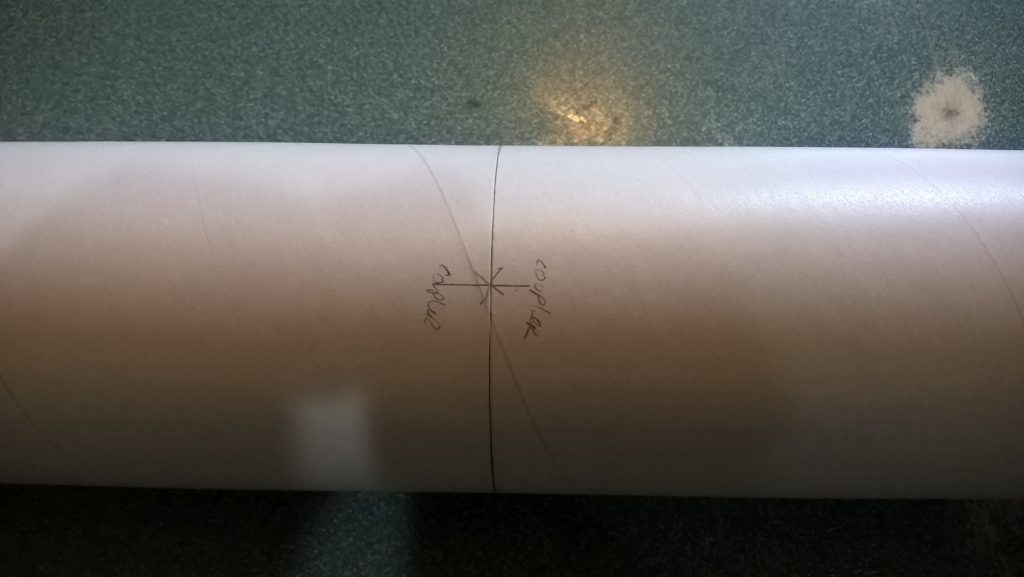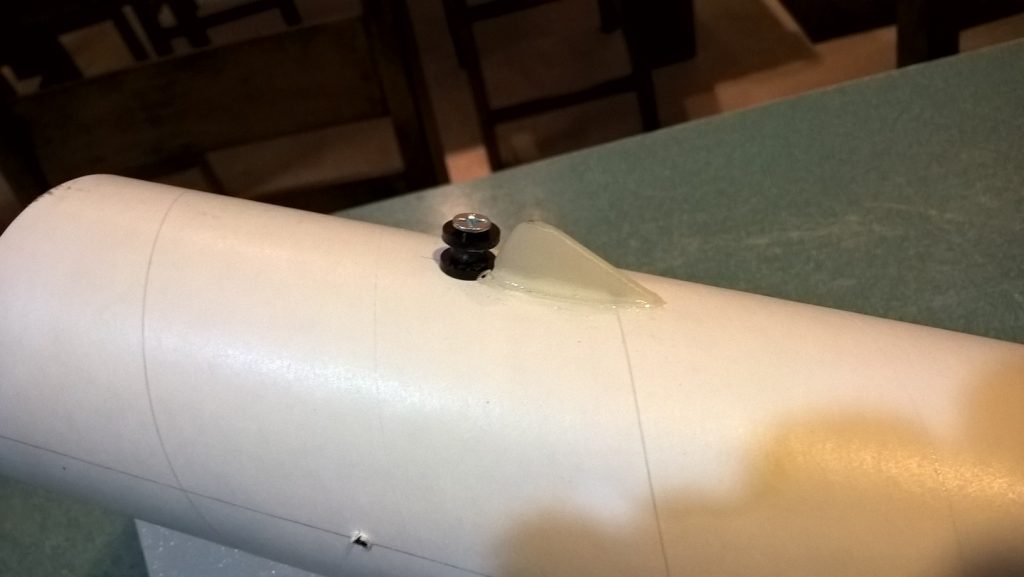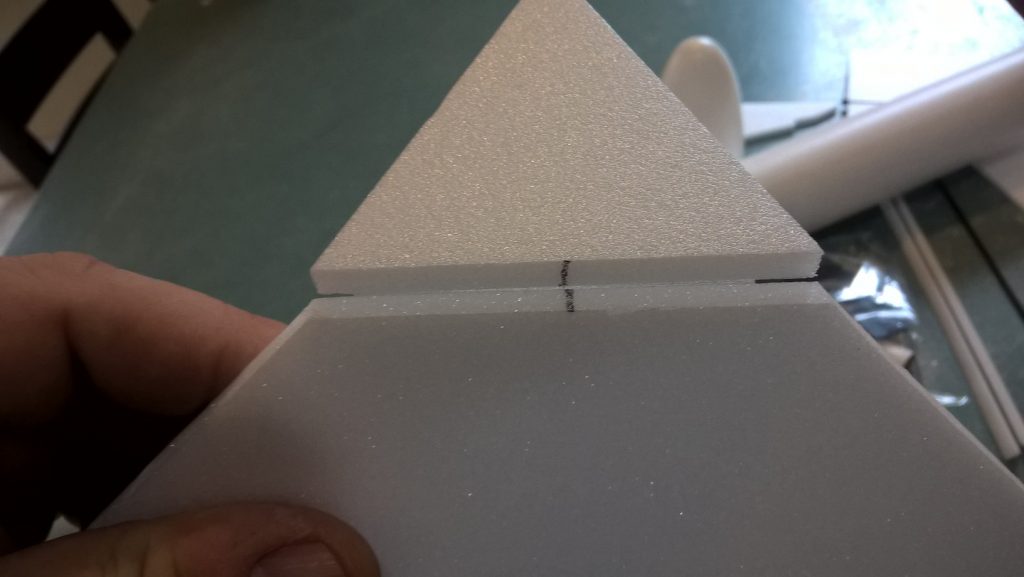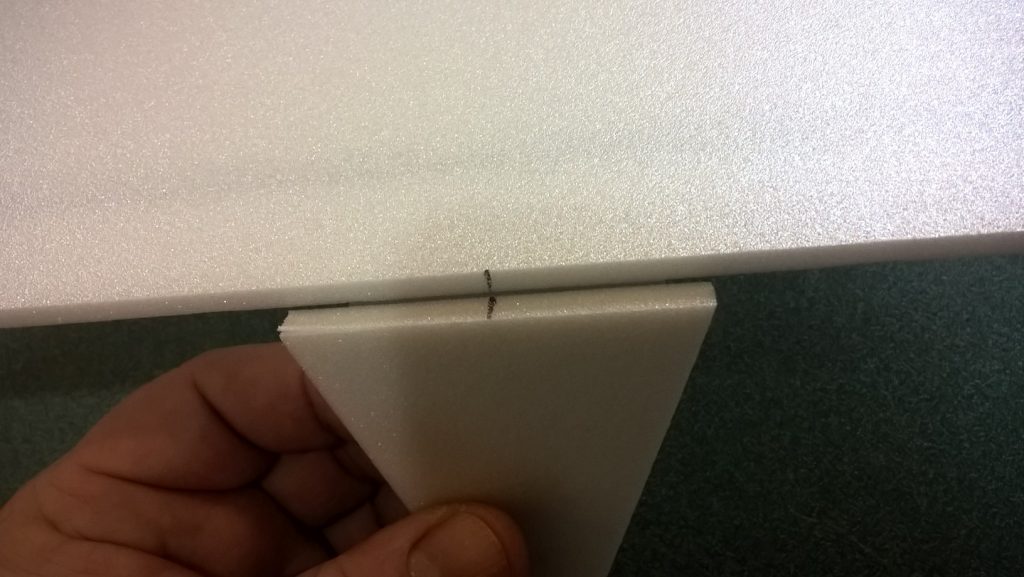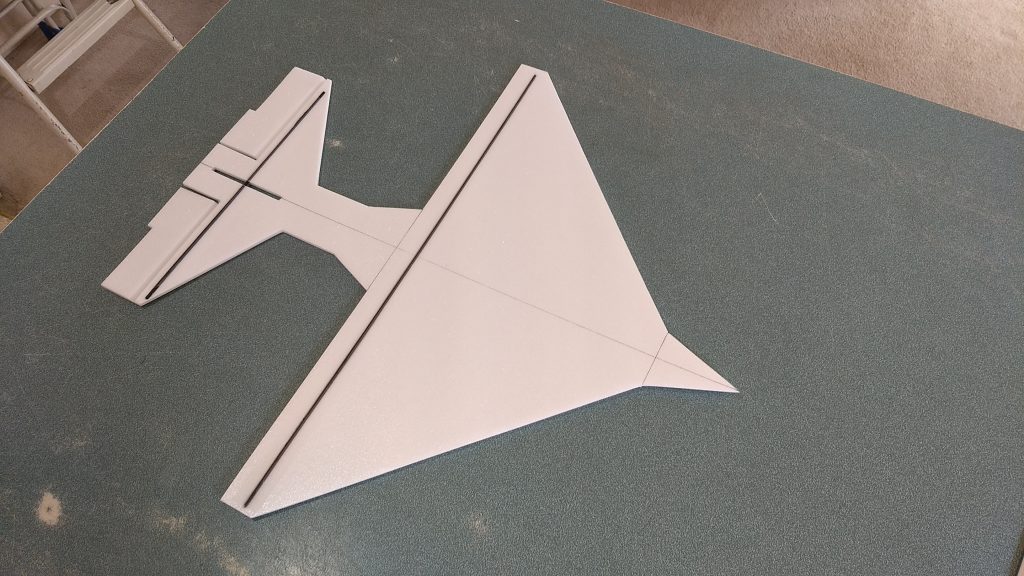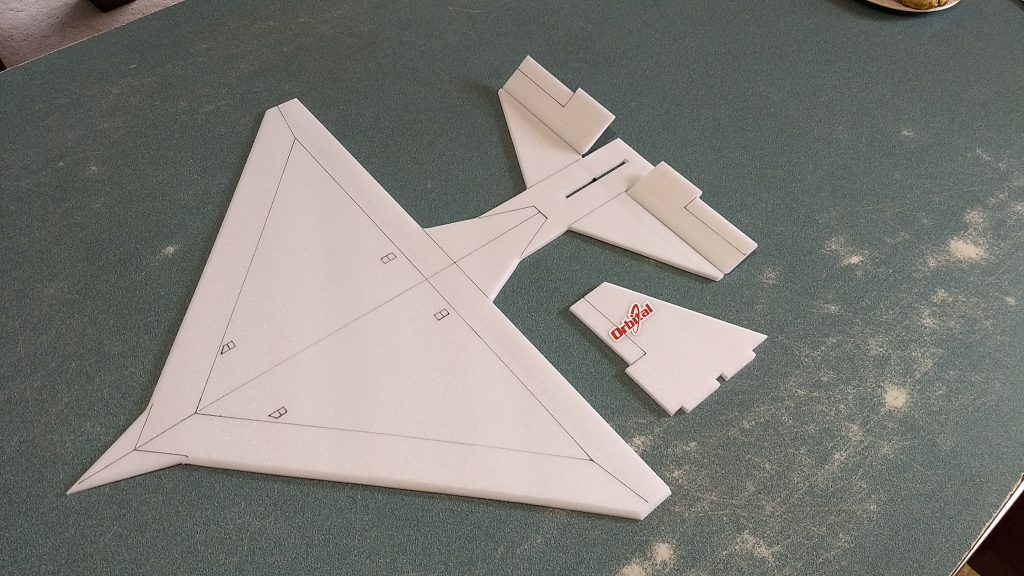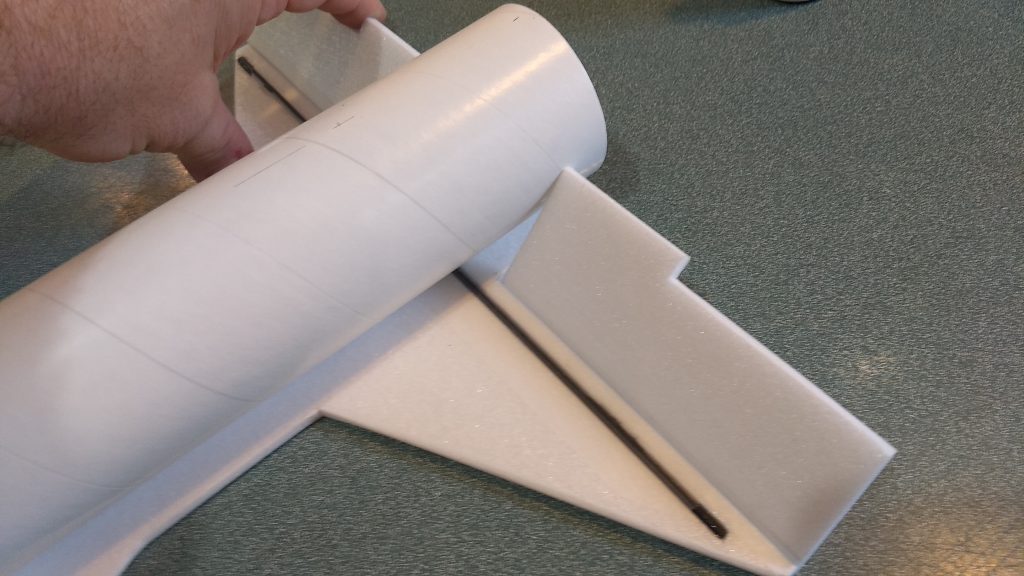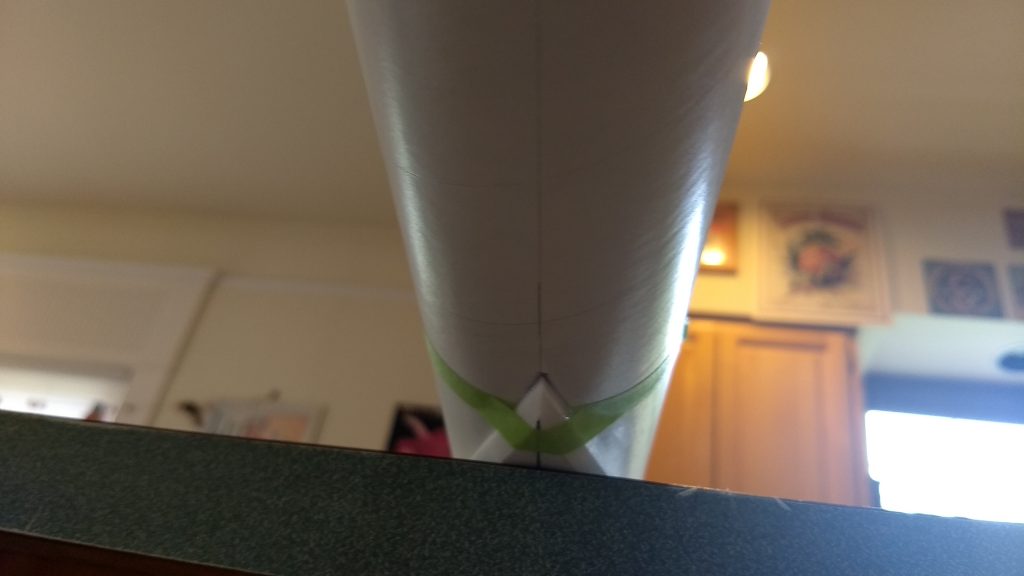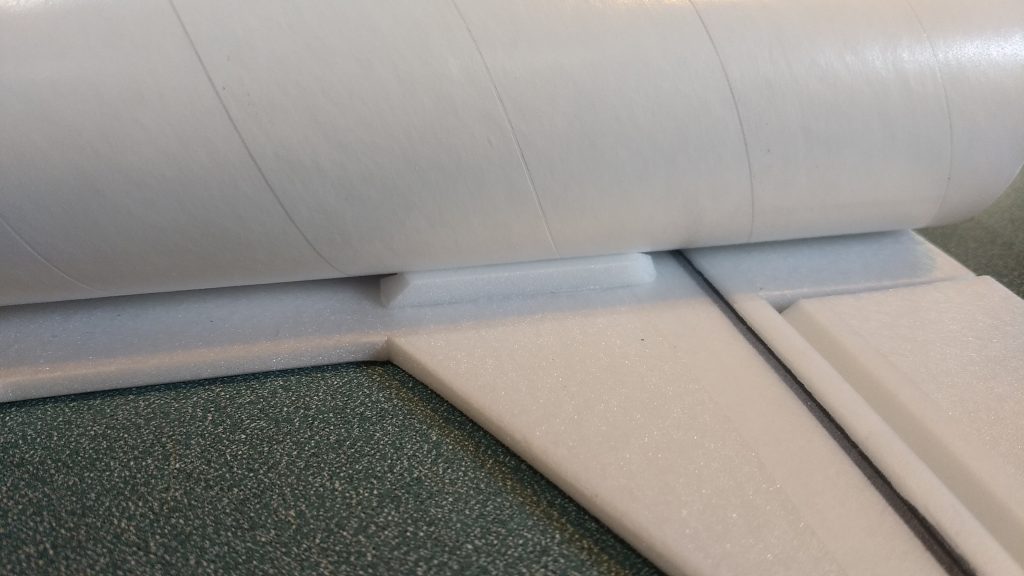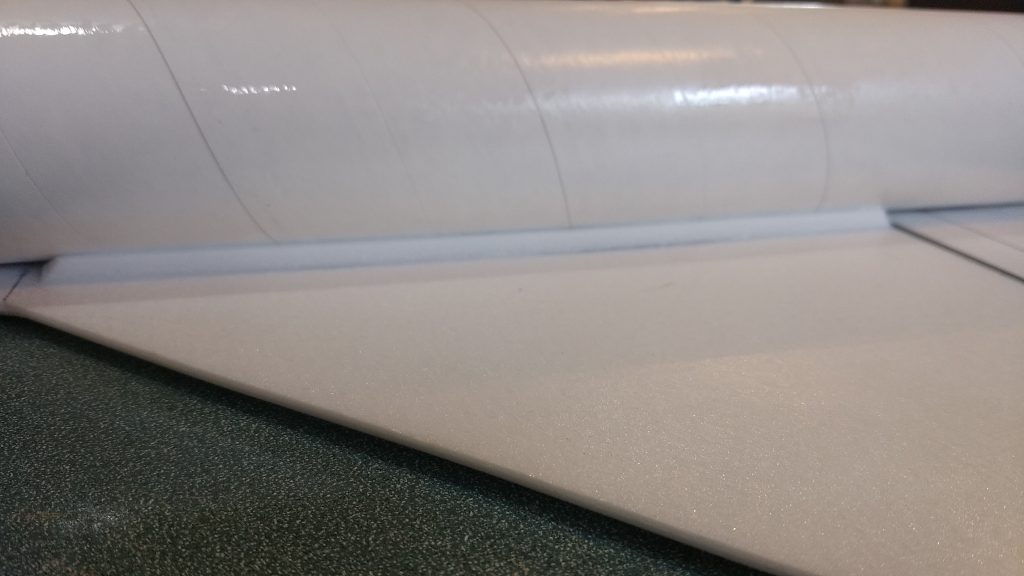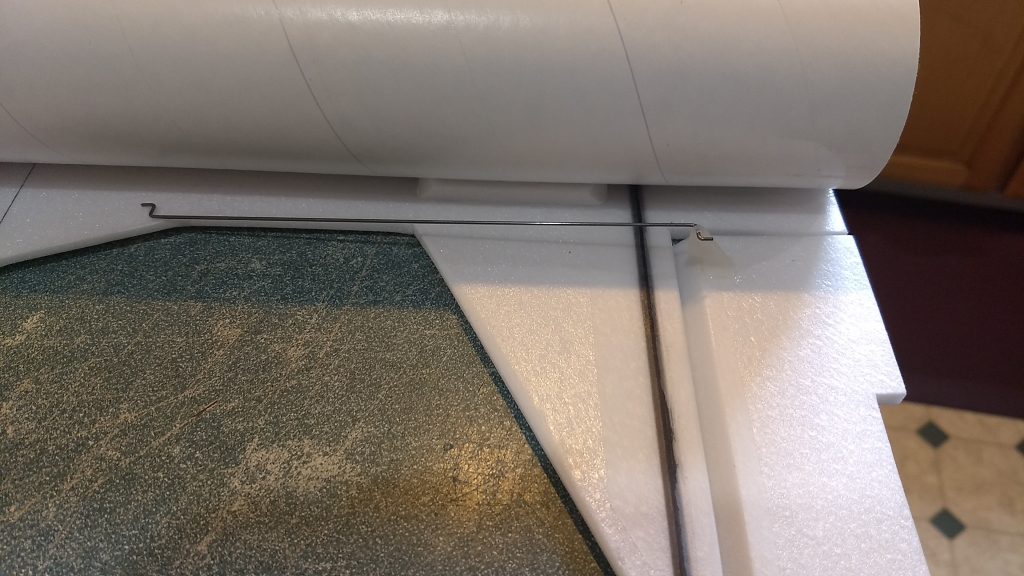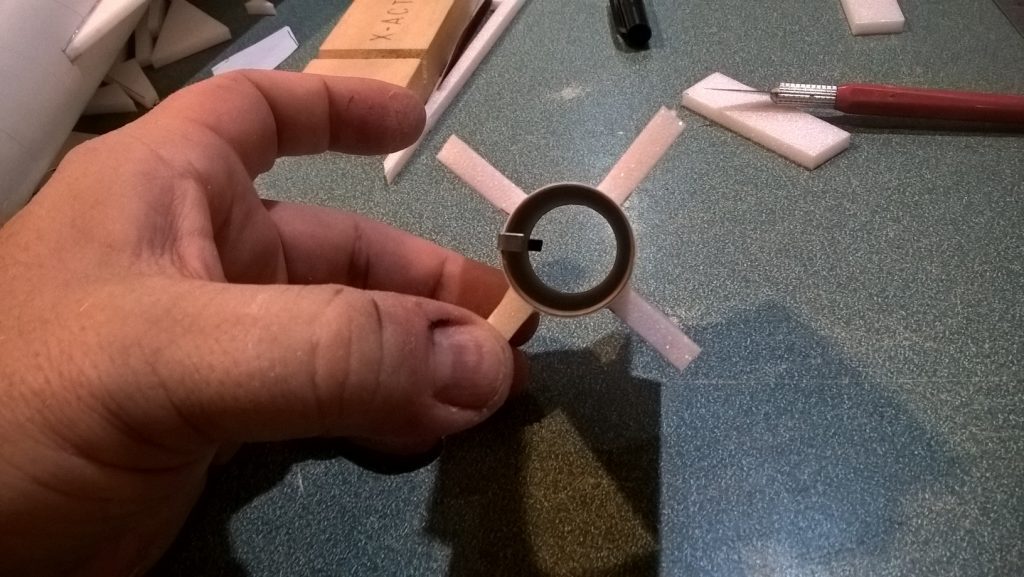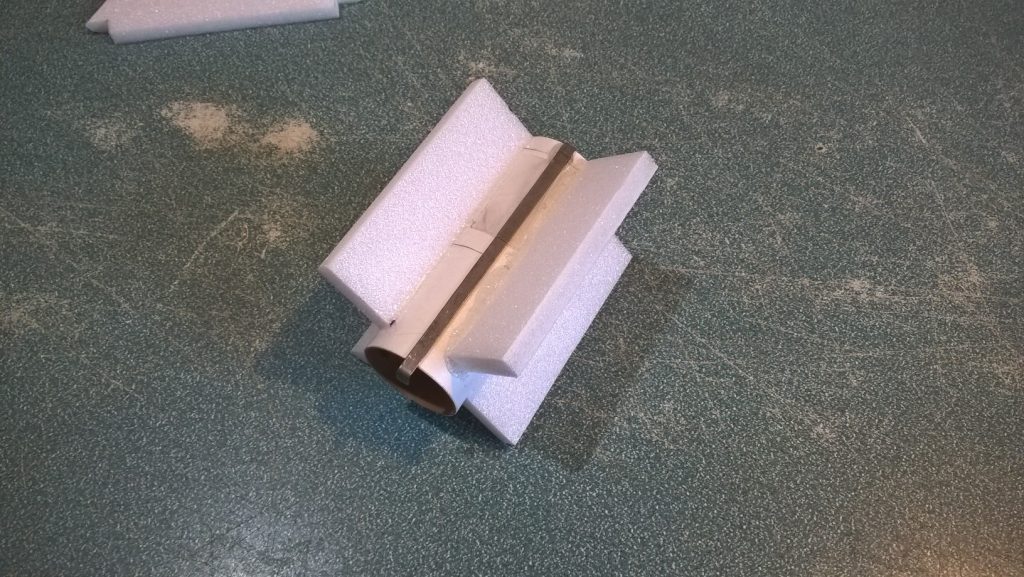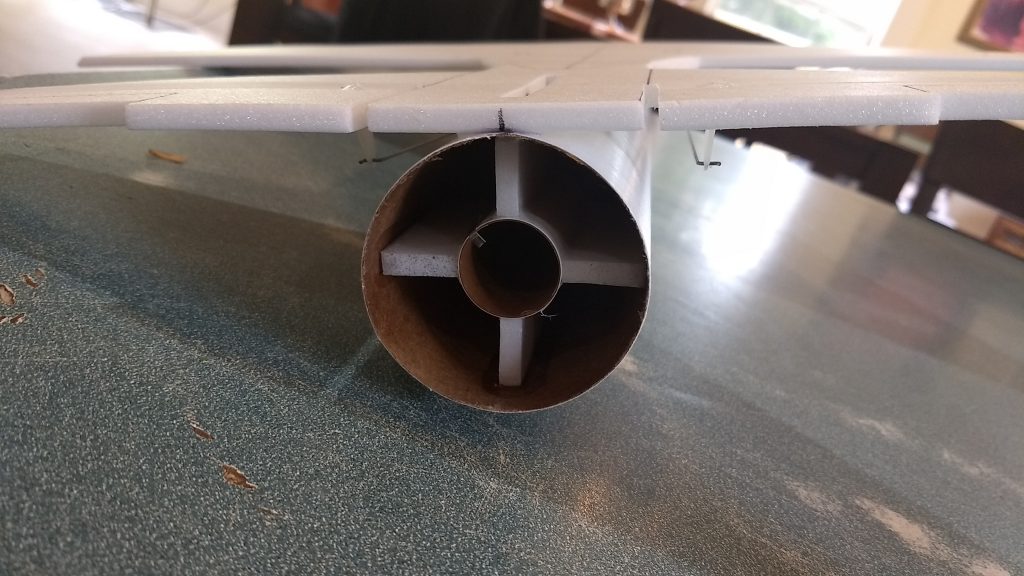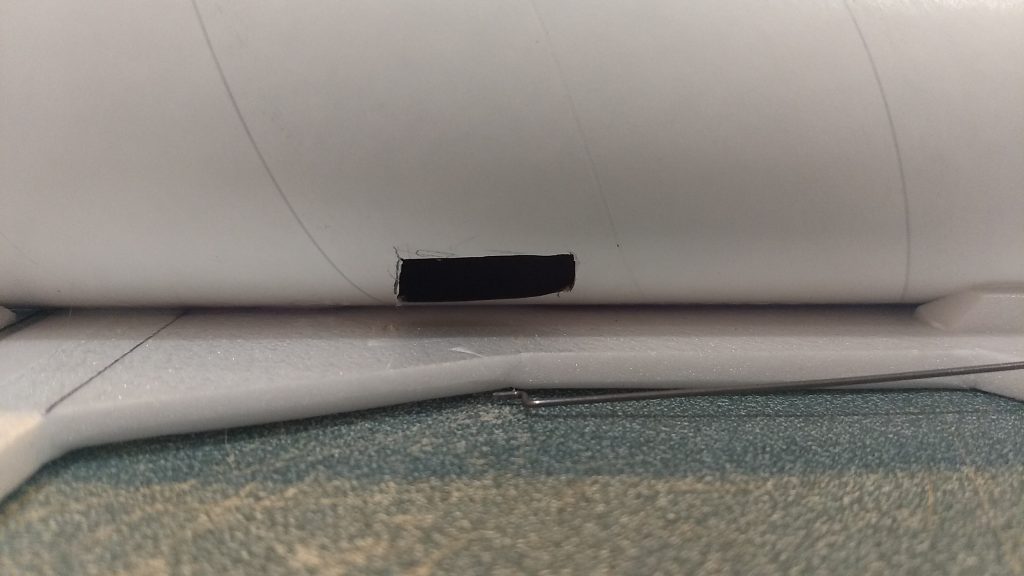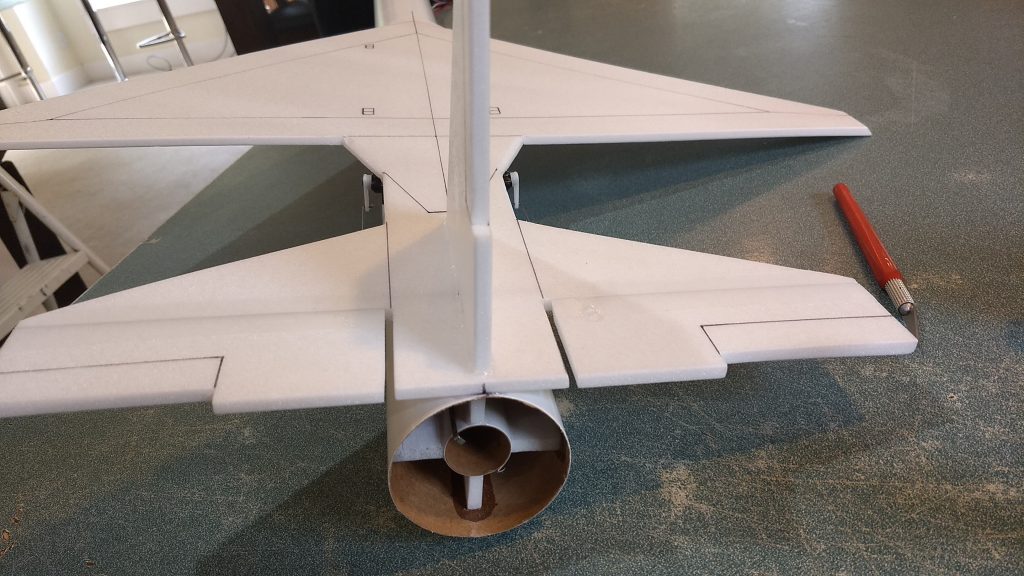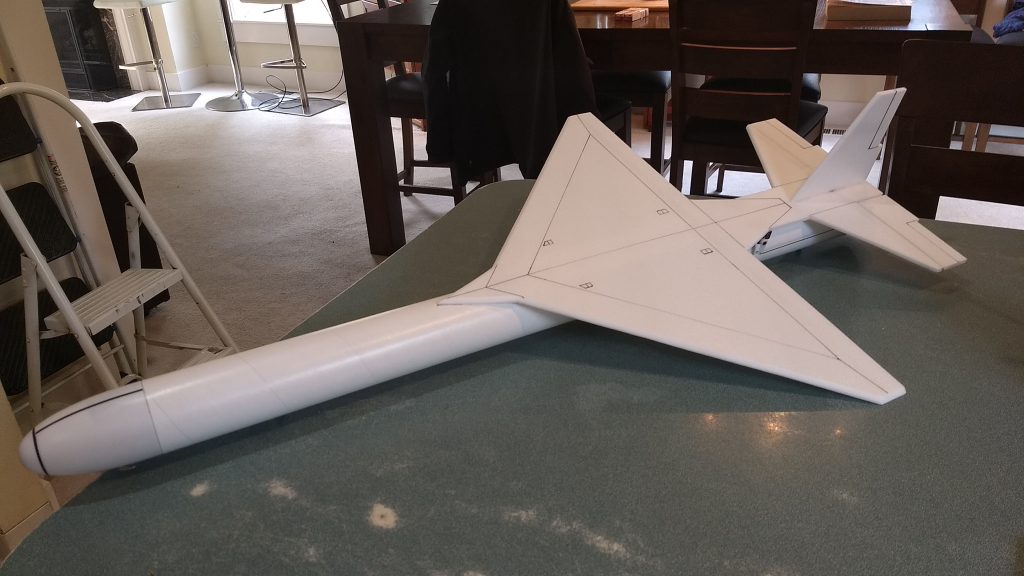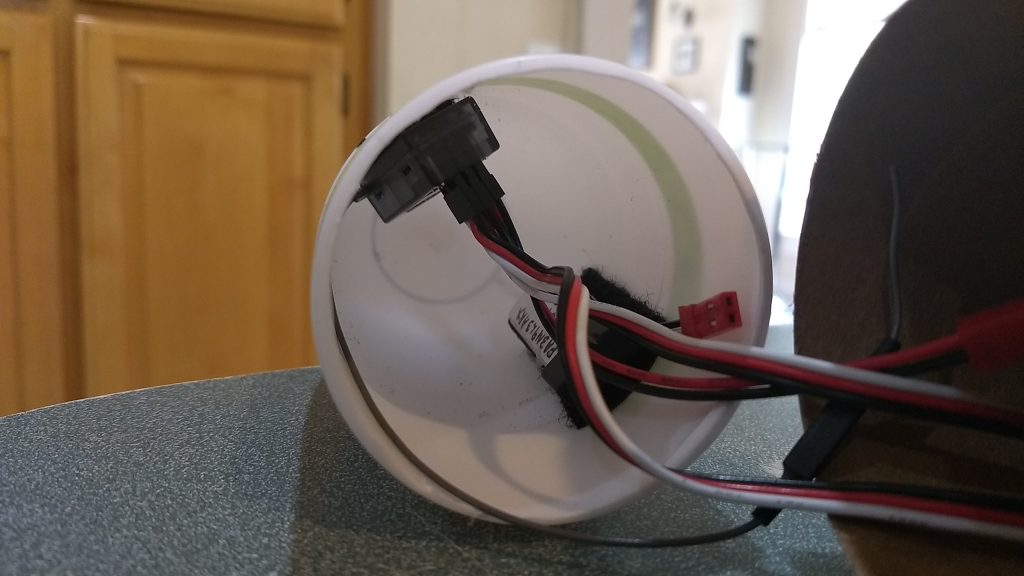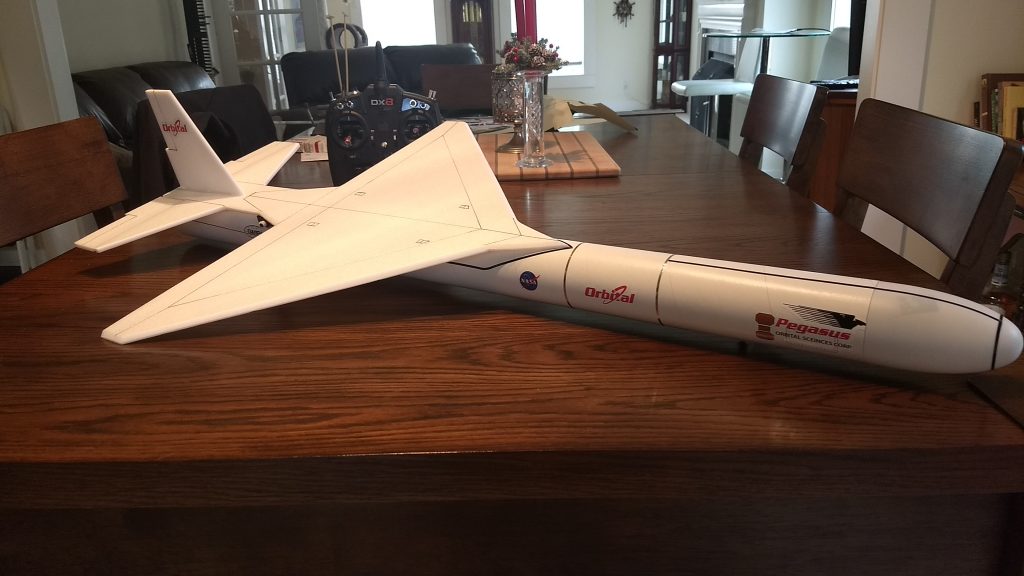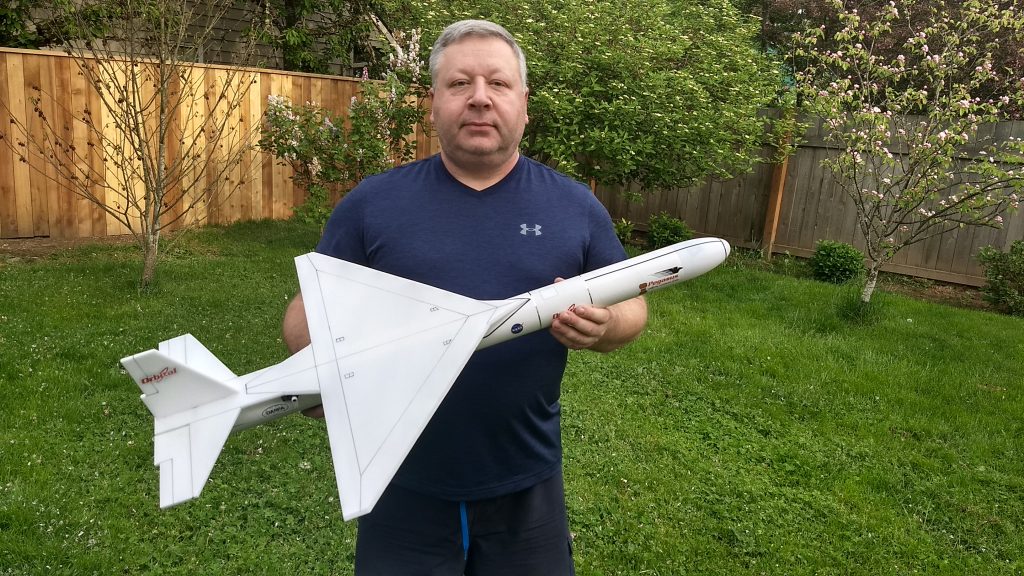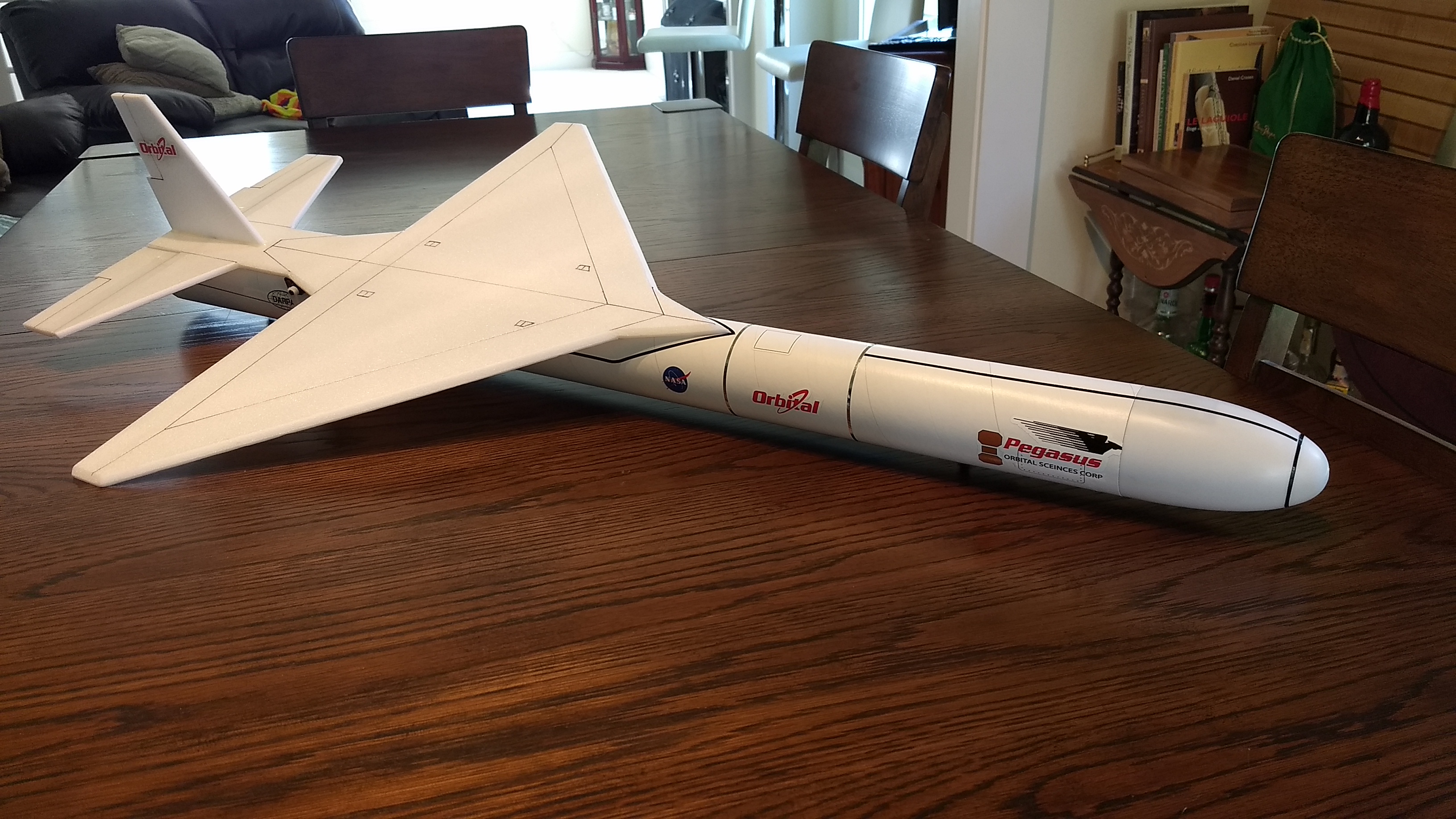
Pegasus X Rocket Glider Kit
The Pegasus X RC Rocket glider kit is modeled after the air launched satelite delivery vehcle. It comes with a plastic nose cone, 2.6″ white tubing for the body and MPF wing and tail surfaces. Construction is very simple and takes about two hours. You will need two 10 gram type servos, two 24″ servo extensions, a receiver, and a small 500mah single cell lipo battery. You will need a transmitter with delta or elevon mixing and a lightweight sub 10 gram receiver. Please refer to the general instructions link above, then read the instructions completely before starting assembly. The assembly photos are for general reference but may not include every step in the instructions. Everything is white so no paint is required. Basic markings are included, I added some pinstripe tape, panel lines and a strip of trim on the bottom to keep it from getting wet. CG location for rocket flight: 15.75″ forward of the rear end of the body tube.
Welcome to the world of rocket boosted radio control gliders. This is not a model for a novice RC pilot, but anyone who is comfortable with RC flying of a medium speed model should be fine. Read through the instructions, look at the photos and be sure you understand the step before commiting to cutting or glue.
Identify all pieces, the kit should contain:
1 wing/tail assembly with spars installed.
1 Nose Cone
2 pushrods
1 vertical stab
2 long and 2 short foam reinforcing strips
2 body tubes
Motor mount
4 foam center strips for motor mount.
Velcro(for battery and rx/bec attachment)
2 Rail buttons with t nuts/screws
2 landing skids
Battery adapter for 1s Lipo to rx
Decals
Lead weight
Spare foam
Notes before starting:
Reference to CA+ means foam safe CA+, normal CA+ will melt the foam! Normally you need to use accelerator to get the CA to set on the foam since there is nothing for it to soak into and activate.
You may use 220-320 grit sandpaper and a sanding block to slightly round or taper the edges of the foam if you prefer that look. It will not markedly impact the flight performance either way. Be very careful and use a light touch, it is very easy to catch the foam on the edge of the paper and tear the foam. Do any sanding before assembly.
Epoxy is not needed in this model. Weight is critical and the model is designed for the thrust and flight loads. Weight in the rear end is bad and will require additional weight in the front of the model.
Assembly:
- Body Tubes. One tube will have a coupler glued in place. Glue the other tube onto the coupler, make sure the small arrow marks are aligned on the two tubes, that will ensure the wing mark and rail button marks are properly aligned. Use CA+ sparingly.
- Make a hole and insert a T-nut into each pre-marked RB(rail button) location on the bottom of the body tube and then screw in the rail button with the included screw.
- Mount a skid in front of each rail button. Make two starter holes, make sure the skid is not too far forward to interfere with the nose cone shoulder and does not hit the rail button. Make sure they are aligned with the rail buttons. Glue in place with CA+. The skids should fit into the slot in the rail and not drag, and should contact the ground before the rail button to protect them on landing.
- Unfold the front and back wing extensions and glue them with foam safe CA+ so that they lay flat.
- Lightly sand the top wing line on the body tube to help adhesion of the glue.
- I sanded the edges of my wing at an angle to give that faceted look, or you can round them if desired before gluing in place. Apply foam safe CA+ onto the wing line and also down the center line of the underside of the wing. The underside has the spar visible.
- Attach the wing onto the body tube keeping it straight and keeping the rear of the wing aligned with the back of the body tube. You can use a little bit of tape to hold the wing in place in the front and back so it doesn’t slide forward/backward. Then quickly flip the wing/body over onto a flat surface. By bending the elevator surface up you can help center the rear of the body tube and make sure it isn’t rolled to the left or right.
- Glue the two long reinforcing strips on either side of the wing, against the body tube and the wing. Don’t push this in too hard as it can rotate the body tube relative to the wing. All this piece does is to act as a filler to allow you to put additional CA fillets against the wing and body tube to help it attach firmly. The angled cut goes into the wing joint. Apply a fillet of CA+ onto the strip and wing/body tube joints.
- Repeat with the small reinforcing strips, these go into the joint where the horizontal stab meets the wing, make sure they don’t interfere with the elevators moving.
- Glue the four foam centering tabs onto the motor mount. Note as you glue the tabs you want them spaced approx evenly around the tube, do not glue to the tape or the motor hook as that needs to move freely.
- Glue the motor mount into the rear of the model, the motor mount can be inset slightly from the end and butt against the rear rail button.
- Glue a pushrod/control horn into the bottom each elevator half in the pre-made holes. The holes will face forward and I prefer to have the pushrod on the side closest to the body tube.
- Apply some foam safe CA+ to the top of the prongs to lock them in place.
The basic construction is now complete.
Radio Installation
Note: Your radio needs to be configured for Delta mixing, this means that the servo arms will move the same direction during elevator stick movement and opposite for aileron stick movement. Connect your servos to the receiver one in the aileron connection and one on the elevator connection and apply power. Use a servo arm at least 9/16” long Zero out any trim settings on the transmitter.
- Insert each pushrod into a servo arm. Note where the servos will sit when the control surface is neutral. The pushrod will be pointing up when the model is placed upside down on a flat surface. Mark the body tube where the servo will be and cut out a pocket in the body tube for your servos in the approx location marked. The servo will be glued to the foam, the cutout in the body tube just needs to clear part of the bottom of the servo.
- Attach a 24″ servo extension to each servo.You just need to be able to route the wire to the front of the tube to attach it to the receiver. Route them into the servo pocket in the body tube toward the front and install the servos. Install the servos so that the electrical wire points forward.
- Tape the servos in place temporarily and flip the model right side up.
- Moving the transmitter stick back(up elevator) should move both stabilizers trailing edges up. Moving the transmitter stick to the right should move the right elevator up and the left down. If you can’t get the servo reversing to give you the right polarity try swapping aileron/elevator inputs to the receiver If that is correct, continue.
- The z bends are made using a tool but sometimes they aren’t perfectly aligned for the control surface, you can use a needle nose pliers to make little adjustments to the bend so that the servo aligns the pushrod with the control horn if needed.
- Make sure the control surfaces are centered, and glue the servos in place to the foam so that the pushrod makes a straight shot to the control horn and the control surface is flat.
- Make sure the control surfaces are level and the servo glue has set.
- Now measure the control surface movement. Full elevator movement should be 1” in each direction, aileron movement should be 5/8″ to 3/4″ in either direction. Since the model will be nose heavy, extra elevator movement helps to give sufficient authority during glide.
- If you have a flap/elevator mix you can program up elevator to a switch setting. The model needs approximately 1/4″ of up elevator trim during glide. If you can’t set the up elevator trim to a switch on your radio you’ll have to manually put in boost and glide trim which is hard to do while flying the model.
- Use the included Velcro to attach the battery and receiver in the nose cone. If you wind up too nose heavy you can move the receiver or battery back into the body tube as needed.
- Glue the vertical fin into the slot in the top of the horizontal stab foam. Make sure it is straight and perpendicular to the wing.
- Insert your heaviest loaded rocket motor into the motor mount
- Support the model at the balance point indicated for boost. I use two pencils with the eraser pointed up and held in place with a small hand vice. Place the model on the pencil erasers on the balance point indicated above. Use the included lead weight to balance it. Do not try to fly the model with it balancing it behind this point. The adage is, a nose heavy model flies poorly, a tail heavy model flies once
- Apply the decals. It helps once applied to use a hair dryer on hot to soften the material and then push it down onto the model with a towel. It helps it conform and stick much better.
- Use a black sharpie to add panel lines if desired. I also used some thin strips of spare vinyl in black and chrome to add some accents to my model.
- Re-install the receiver and battery
Flying: See the General Instruction/Information link at the top for flying instructions. Be ready on the first few flights to keep the model straight till you have the trims set perfectly for boost and glide.
- Join the two body tube pieces so that the arrow marks align.
- Install the rear rail button and glue the skid just in front of it.
- Install the front rail button and glue the skid just in front of it, make sure the prongs in the skid don’t interfere with the nose cone shoulder.
- Glue the front taped wing joint so that it lays flat.
- Glue the rear taped wing joint so that it lays flat.
- Wing glued flat
- Topside of wing showing panel lines and edges tapered
- Glue the body tube to the wing/tail assembly, you can use the elevators to help center the rear of the tube.
- Elevators used to center the rear of the tube.
- Taping the front of the wing on the alignment line.
- Tube glued to the wing
- Glue the two small strips to reinforce the horizontal stab joint on both sides
- Install the long reinforcing strip on both sides of the wing.
- Glue the two control horns/pushrods to the elevator using the pre-made holes.
- Apply CA to the top of the control horn prongs to lock them in place.
- If not assembled for you, glue the four foam tabs onto the motor tube, evenly spaced and even with the front of the motor tube. If included glue the thrust ring to the front of the motor mount.
- assembled motor mount
- Install the motor mount, you can recess it till it hits the rail button screw.
- Attach a servo to the pushrod and mark the body tube where it needs to be cut to inset the servo
- hole cut to recess the servo
- Servo installed and glued in place with the elevator neutral.
- Servo installed showing how it is just recessed enough to have a straight shot for the pushrod to the elevator
- Vertical stab installed
- Model completed.
- Receiver and battery installed into the nose cone with included velcro.
- Decals applied along with panel lines and some pinstrip tape accents.
- Ready to fly after balancing with motor in place.
